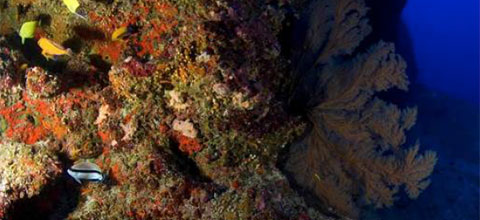
Encompassing over 1,500,000 km2 of pristine ecosystems, the Papahānaumokuākea Marine National Monument (PMNM) surrounding the Northwestern Hawaiian Islands (NWHI) represents the largest marine conservation area on the globe. With the establishment of the PMNM in 2006, there has been an increased emphasis to characterize the biodiversity of the NWHI. The fauna of this remote region has previously been surveyed both in shallow water (< 30 m) using snorkeling and conventional SCUBA diving, as well as in deep water (> 200 m) through the use of trawling, manned submersibles and remotely operated vehicles. However, as in many regions around the globe, little is known about the biodiversity found between these two depth ranges. This intermediate depth zone hosts mesophotic coral ecosystems (MCEs), which are light-dependent coral reefs found below the depth limits of conventional SCUBA diving (> 30 m), and extend to the deepest portion of the photic zone, which may be over 150 m in locations with high water clarity, such as Hawai‘i. MCEs are notoriously under surveyed worldwide, particularly in remote locations like the NWHI. From 2012-2015, annual research expeditions were launched to characterize the biodiversity at mesophotic depths (50-90 m) within PMNM using mixed-gas technical diving. As part of these efforts, the benthic flora and fauna were surveyed using photoquadrat images taken along belt-transects, in combination with collections of biological specimens. Over 200 macrobenthic species were recorded from mesophotic coral ecosystems in the NWHI, including many new species that are in the process of being described. Known benthic species included cyanobacteria, macroalgae, sponges, bryozoans, cnidarians, echinoderms and tunicates. Benthic species recorded during these surveys are described and illustrated. Many of these species are also found on shallow-water reefs across the Hawaiian Archipealgo, and as such this guide complements existing taxonomic guides of Hawaiian coral reef flora and fauna.

